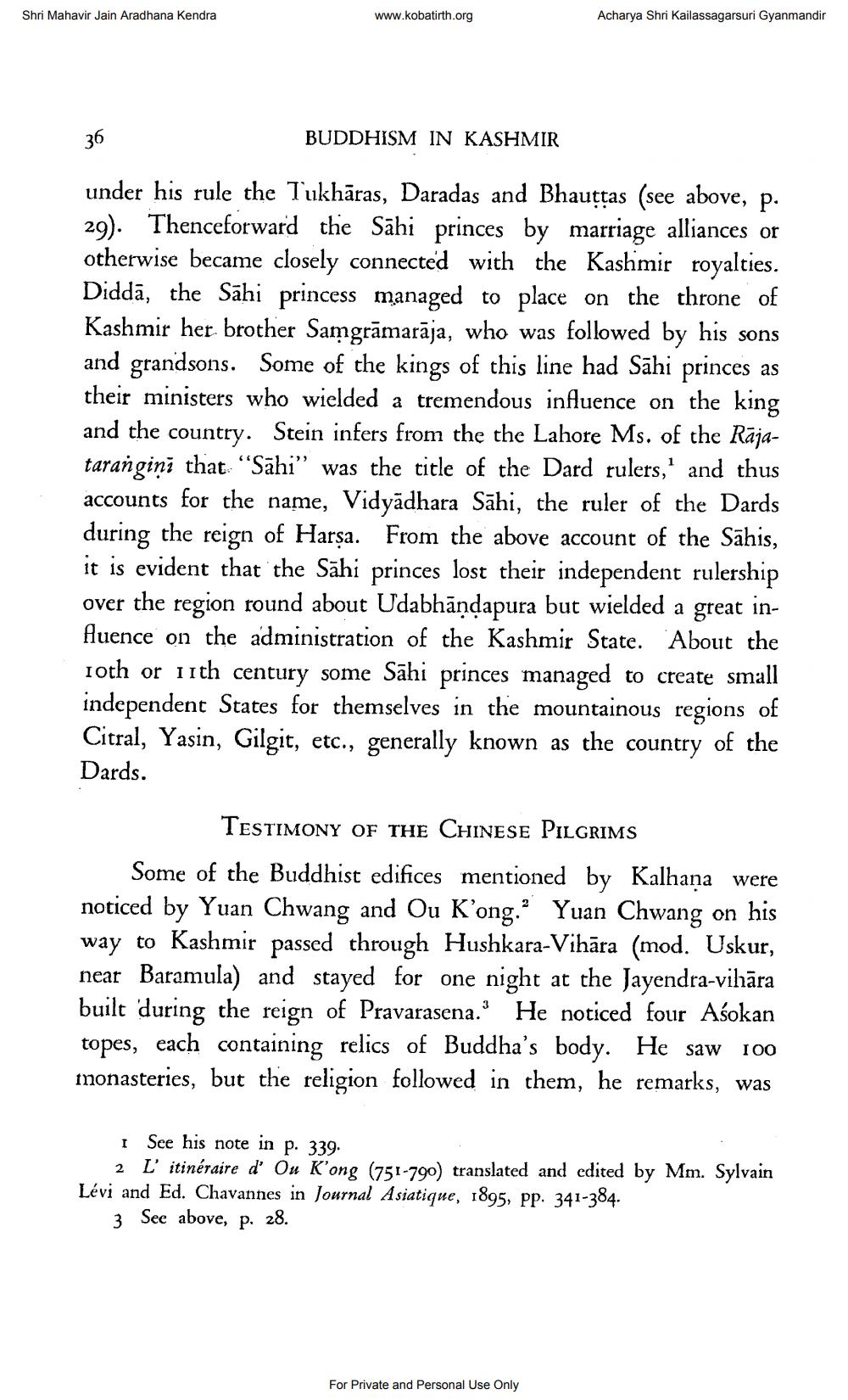________________
Shri Mahavir Jain Aradhana Kendra
36
www.kobatirth.org
BUDDHISM IN KASHMIR
Acharya Shri Kailassagarsuri Gyanmandir
under his rule the Tukhāras, Daradas and Bhauttas (see above, p. 29). Thenceforward the Sahi princes by marriage alliances or otherwise became closely connected with the Kashmir royalties. Didda, the Sahi princess managed to place on the throne of Kashmir her brother Samgrāmarāja, who was followed by his sons and grandsons. Some of the kings of this line had Sahi princes as their ministers who wielded a tremendous influence on the king and the country. Stein infers from the the Lahore Ms. of the Rājatarangini that "Sahi" was the title of the Dard rulers,' and thus accounts for the name, Vidyādhara Sāhi, the ruler of the Dards during the reign of Harṣa. From the above account of the Sahis, it is evident that the Sahi princes lost their independent rulership over the region round about Udabhāṇḍapura but wielded a great influence on the administration of the Kashmir State. About the 10th or 11th century some Sahi princes managed to create small independent States for themselves in the mountainous regions of Citral, Yasin, Gilgit, etc., generally known as the country of the Dards.
TESTIMONY OF THE CHINESE PILGRIMS
Some of the Buddhist edifices mentioned by Kalhana were noticed by Yuan Chwang and Ou K'ong." Yuan Chwang on his way to Kashmir passed through Hushkara-Vihāra (mod. Uskur, near Baramula) and stayed for one night at the Jayendra-vihāra built during the reign of Pravarasena. He noticed four Aśokan topes, each containing relics of Buddha's body. He saw 100 monasteries, but the religion followed in them, he remarks, was
I See his note in p. 339.
2
L'itinéraire d' Ou K'ong (751-790) translated and edited by Mm. Sylvain Lévi and Ed. Chavannes in Journal Asiatique, 1895, PP. 341-384.
3 See above, p. 28.
For Private and Personal Use Only




